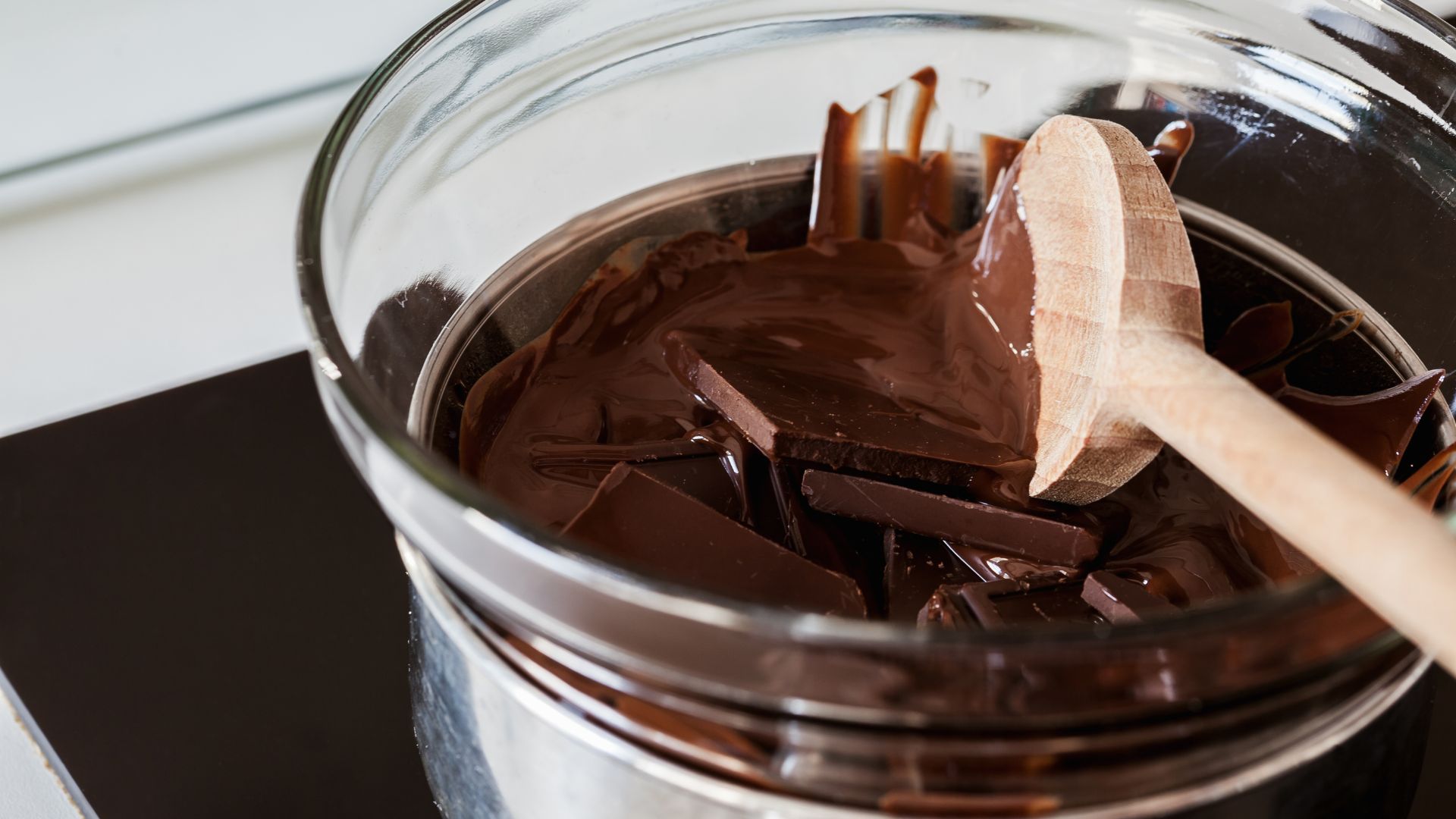Tempering is a technique used in cooking and baking to carefully control temperature changes, usually to achieve a specific texture, appearance, or structure in a finished dish. The goal is often to stabilize delicate ingredients so they behave predictably.
You’ll see tempering pop up in a few major areas:
- Chocolate.
- Tempering chocolate involves melting it, then cooling and reheating it in a controlled way to encourage stable crystal formation. Properly tempered chocolate has a glossy finish and a crisp snap, and it melts smoothly on the tongue. (You can dive deeper into chocolate tempering in The Chocolate Lab.)
- Eggs. (custards, sauces)
- When making things like pastry cream, ice cream bases, or hollandaise sauce, you temper eggs by slowly adding hot liquid while whisking. This gently raises the temperature without scrambling the eggs, creating a smooth, creamy texture.
- Sugar. (candy making)
- Tempering sugar usually means carefully heating and cooling it to precise stages during candy making (like when making caramels or pulled sugar). It ensures the right texture — whether soft, chewy, or glassy-crisp.
In every case, tempering is about patience and precision. You’re coaxing sensitive ingredients through temperature changes gently, instead of shocking them into disaster. It’s one of those “small hinge, big door” skills — once you understand how tempering works, it unlocks a whole world of fancier, more consistent cooking.
You can see tempering in action in The Chocolate Lab.
« Back to Glossary Index
